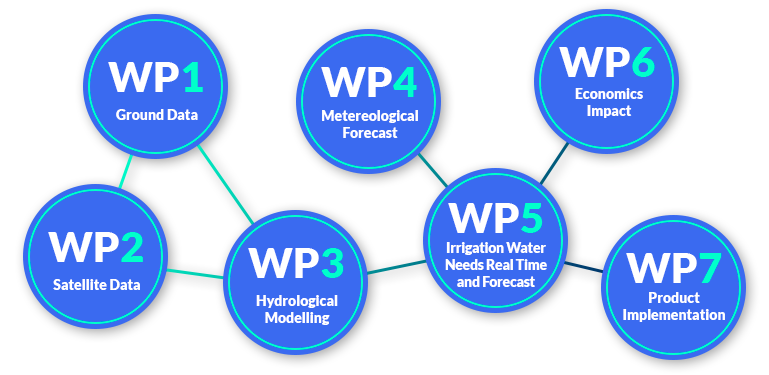The research methodology is based on a multi-disciplinary approach that links together satellite data, ground measurements and numerical models all of them oriented to develop an operative forecast tool of water needs for irrigation.
The objective of the proposal is to develop and apply a tool for real-time forecast of crop water needs, to support interventions to reduce water losses in agriculture in case of dry or more severe drought periods and to promote a more sustainable use of the water in agriculture, supporting parsimonious water irrigation management at basin scale moving from the need of a single farmer. The different case studies represents the different spatial scale from farm to basin and also the respective end users needs (farmers, irrigation consortia, and river basin authority).
In addition to the above operative objective, several scientific objectives will be addressed.
The objectives stated above will be achieved through a number of interconnected and synergic activities, which are divided in work packages (WP), with their own deliverables and milestones.


